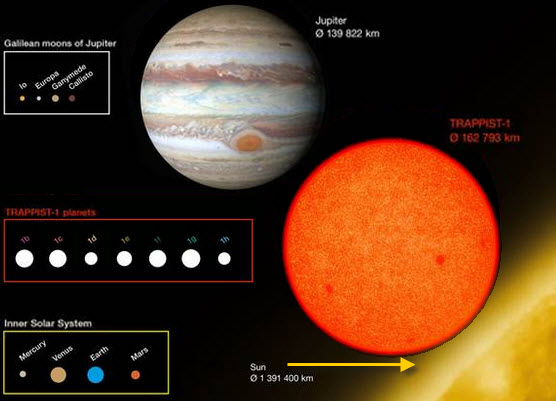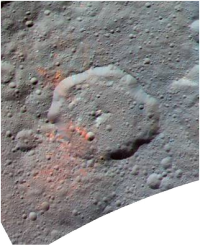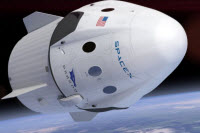It's been a big news week for space, so let's have a round-up in the Newsletter.
Seven Earth-sized Planets around a Supercool Dwarf Star
It’s not often that astronomers find Earth-like planets around other stars. There are a lot of reasons for that. But last spring, a team of researchers announced that they’d found three new Earth-sized, rocky planets with temperatures moderate enough for liquid water, and therefore life as we know it to survive upon. And all those planets are orbiting the same star, which is only 39 light years away!
This week, the group made another big announcement: they found four more planets orbiting that same star. And three of the new planets they found are also Earth-sized, rocky, and at the right temperature for life to survive. They published their findings in the journal Nature.
This is the solar system you want to go to. You could have so many planets! The planets’ parent star is named TRAPPIST-1, and it’s amazingly cool. In fact, you could call it "ultra cool". Because that is how it is classified: it’s an ultracool dwarf star. Ultracool dwarfs aren’t much bigger than Jupiter, and they’re just barely hot enough to convert hydrogen into helium, which is how they produce the energy that keeps them going.
Last spring was the first time we’d found planets around an ultracool dwarf, and now we have even more to add to the list, just around this one star. The team found the planets using a common method called transit photometry. When a planet passes in front of its star, it blocks a little of the star’s light, and astronomers can use those measurements to detect planets and figure out some basic information about them. After the first three planets were found around TRAPPIST-1, the team used telescopes on the ground and NASA’s Spitzer Space Telescope to find the remaining four.

Size Comparison: Trappist-1 system vs Jupiter system vs Inner Solar System
Image credit: ESO/O. Furtak
Right now, we don’t know much about the planets besides their size, their density, and that they could be habitable, but we hope to learn a lot more in the coming years, especially with the launch of the James Webb Space Telescope. JWST, which is scheduled to launch next year, will be able to study the atmosphere of these distant planets, which will tell us more about their climate and if there could be liquid water on the surface.
Of course, finding planets where life might be able to survive doesn’t mean they actually harbour life. But with each new discovery, we’re learning that life-friendly environments are much more common in the universe than we once thought. And that includes water within our own solar system.
Organic Molecules found on Ceres and possibiliy of an Underwater Ocean

Ernutet Crater on Ceres: areas
coloured red rich in organics.
Image: NASA/JPL-Caltech/etc
Back in 2015, NASA’s Dawn spacecraft arrived at Ceres, a dwarf planet that’s the largest object in the asteroid belt between Mars and Jupiter. And last week, in a report published in the journal Science, Dawn researchers announced they’d found organic molecules, aka the building blocks of life, on Ceres’ surface.
Organic molecules are carbon containing molecules, which is the foundation for life as we know it. Dawn’s instruments weren’t able to detect exactly what kind of molecules were on the surface, but they’re probably tar-like molecules like kerite and asphaltite.
The probe found large concentrations of the molecules in two different craters - a total of 1400 square kilometres. It’s also possible that Ceres once had an ocean under its surface, though we don’t know if it still does. And it could have some internal heat left over from when it formed.
Combining organic molecules, liquid water, and heat is a pretty good recipe for life - so there’s a possibility that primitive life, like tiny microbes, could have developed on Ceres. It’s still important to remember that all we have at this point is evidence that Ceres has some of the ingredients for life, not that there actually are or ever were living things there. But with about four months left in Dawn’s mission, hopefully we’ll be learning a lot more about that crazy, unusual world.
SpaceX: Manned round-Moon mission announced

SpaceX Dragon to carry comme-
cial passengers beyond the Moon
and back in 2018. Image: SpaceX
And back here on Earth, it's been a big week for SpaceX. We discussed SpaceX in Andi's talk on terraforming Mars in February's Meeting, because SpaceX hopes to start taking paying passengers to start a colony on Mars within the next 10 years. This week SpaceX got two well-healed and paying passengers fly them around and beyond The Moon. It will be the first time anyone has been outside near-earth orbit since the end of the Moon missions approaching half a century ago.
And it's a kind of testament to Moon missions past and planned, that this week SpaceX launched their first rocket from Pad 39A at Kennedy Space Centre. Pad 39A is where some of the most important human spaceflight missions began, from Apollo 11 to the last space shuttle flight six years ago. One day, SpaceX hopes to launch the first human mission to Mars from that pad, so the fact that their first launch from 39A was a success is a good start to the next chapter of the launch pad’s story.
Not only did the capsule make it safely into space, but the rocket’s booster also had a picture-perfect landing back on the ground, meaning it can be reused for another mission. The experiments on board represent work from 800 scientists around the world, including projects about things like how wounds heal and how bacteria and stem cells grows in space. The capsule also included instruments, like SAGE-III, which will monitor the Earth looking for atmospheric ozone, and Raven, which will collect data to help future spacecraft dock automatically.
So between finding new Earth-like planets, looking for evidence of life on Ceres, announcing a manned trip round The Moon and launching lots of new experiments, it’s been a big week for space exploration.
The video and most of the material for this article was put together by YouTube channel "SciShow Space". You can support their work creating videos that help to teach the world about astronomy by sponsoring a dollar or two per month via their Patreon page.
- Log in to post comments


